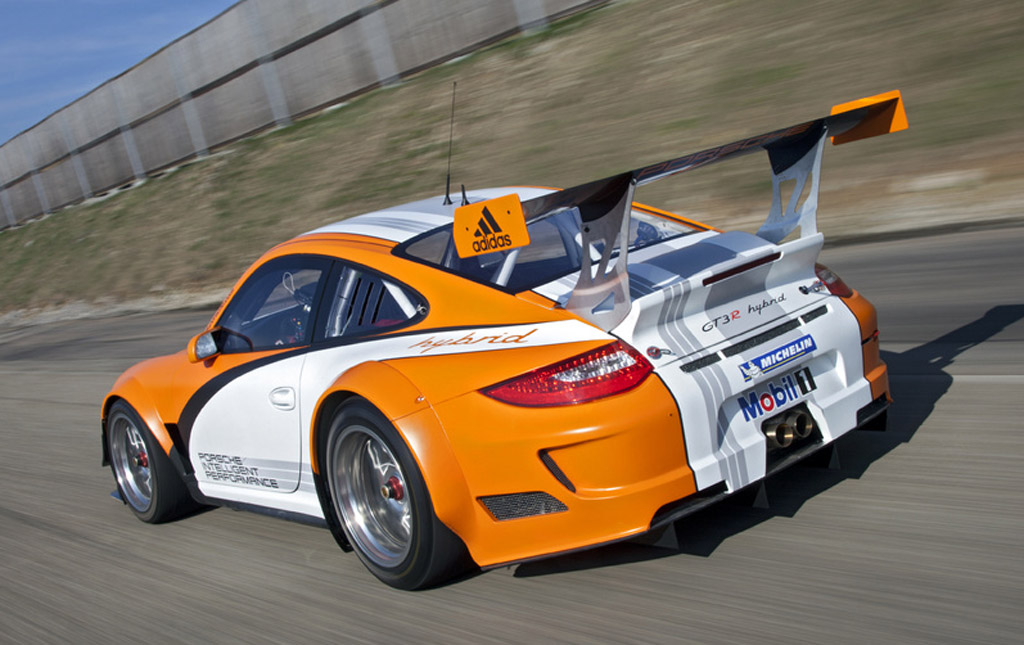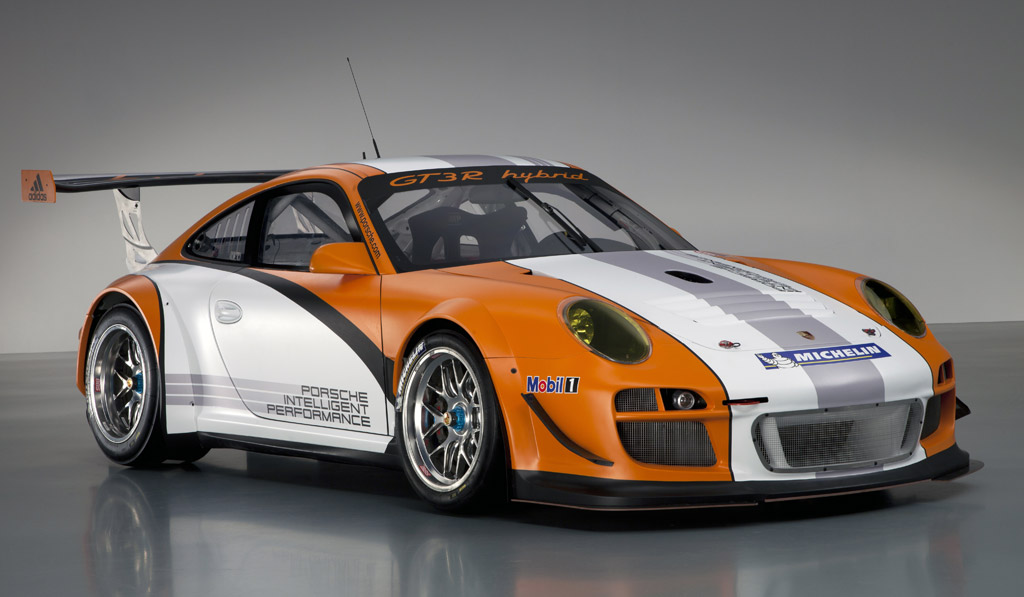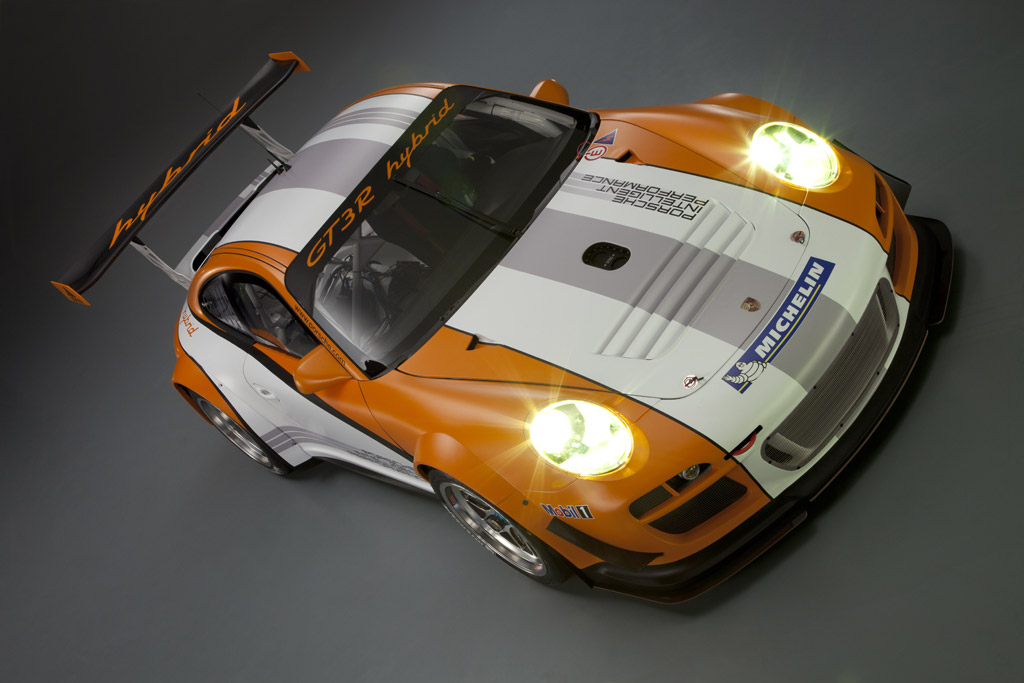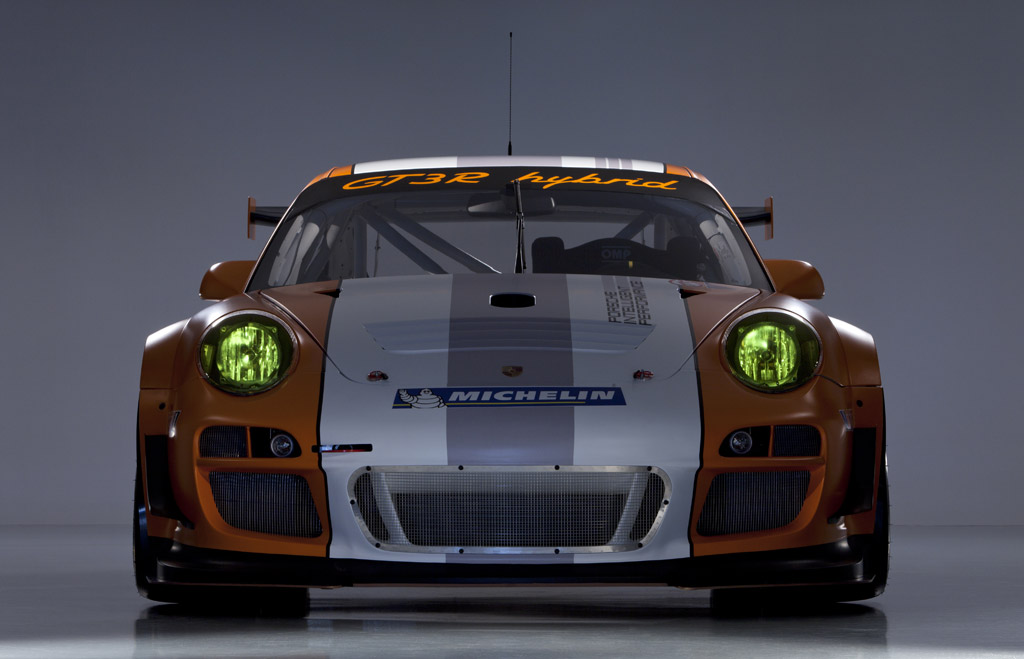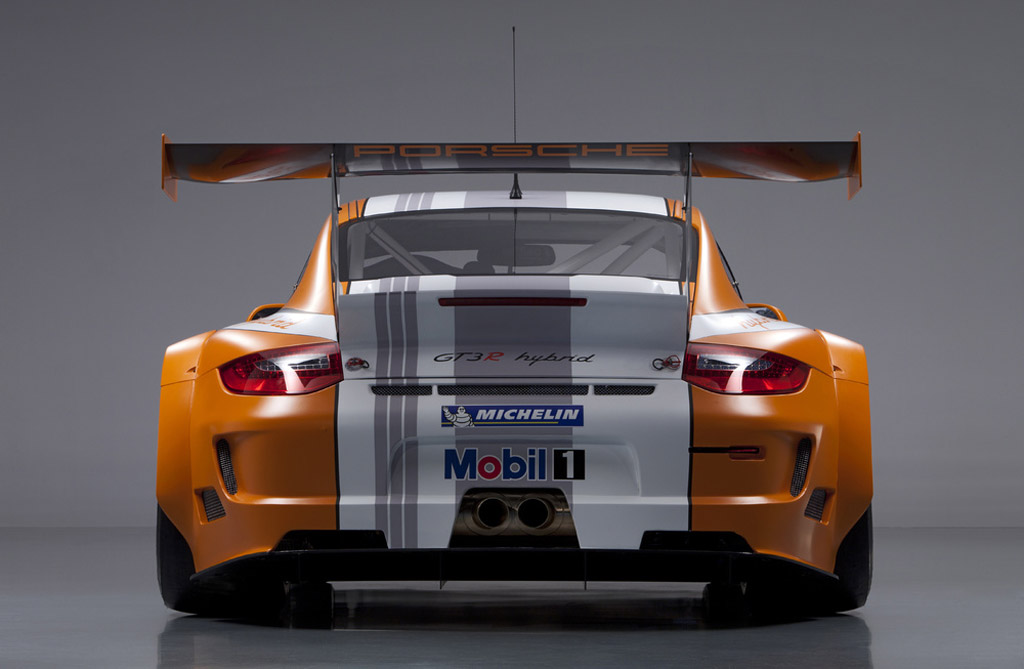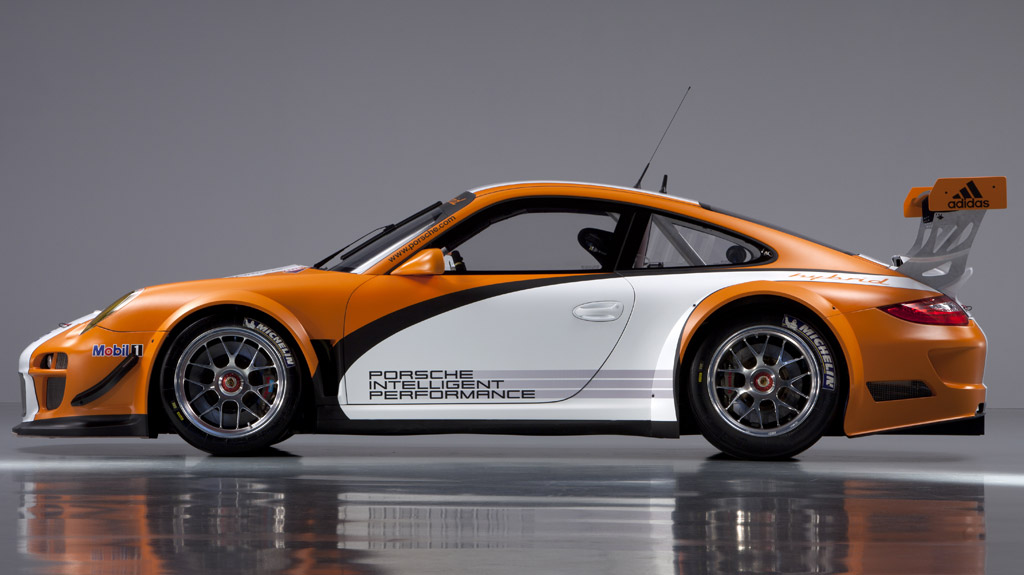(2011) Porsche 911 GT3 R Hybrid 2.0 – Ultimate Guide
Porsche 911 GT3 R Hybrid 2.0 is V2 of its GT3 R Hybrid race car. It’s the second iteration of Porsche’s ground-breaking 911 endurance racer fitted with a Kinetic Energy Recovery System, or KERS. The first version of the 911 GT3 R Hybrid, revealed in 2010, led the 24 Hours of Nurburgring in its first competition run, until a mechanical failure forced it to retire just a few hours before the checkered flag. That failure, irony would have it was due to an issue with the combustion engine, not any of the hybrid components. In October, the car finished the Petit Le Mans at Road Atlanta, part of the American Le Mans Series, where it won its special experimental class…of one car. That weekend, Porsche’s Dr. Daniel Armbruster, who led the hybrid racer’s development team, indicated that further development would focus on integrating the mechanical systems, to cut the weight to that of a standard 911 GT3 RSR, and refining the software.
Porsche has announced that they will be entering an improved version of the Porsche 911 GT3 R Hybrid into the upcoming Nürburgring 24 hour race on June 25, 2011. The hybrid system will combine the same 480 HP 4.0 Liter flat six engine delivering the same 480 hp with two electric motors that each produce 100 HP, as opposed to the original 75 HP each. The weight has also been lowered from 1,350 to 1,300 kilograms, or 2976 lbs to 2866 lbs.
“We’ve collected a great deal of information from our races on the Nürburgring, at the ALMS race at Road Atlanta in the USA, as well as from the ILMC race on China’s Zhuhai circuit, which was an invaluable help for the further development of our racing laboratory,” says Hartmut Kristen, head of Porsche motorsport. “The emphasis of our work was on improving efficiency. That means we want to keep the lap times consis-tent with 2010 but use less energy, hence less fuel. In this way, we support future developments of road-going, sporting hybrid vehicles.”
The 2011 model’s, or Version 2.0, exterior will be distinguished from the previous version by the elimination of the large louvers in front of the rear fenders. This will allow for reduced drag and better fuel consumption. It has also undergone various winter testing that has lead to a 50lb drop in weight, from 1,350lbs down to 1,300lbs.
Other than the motors, the biggest changes for the Version 2.0 will be found in the interior. The cockpit has been completely revised with most of the displays and controls getting moved to the steering wheel. Drivers can operate the rest of the functions via backlit buttons now situated on the center console. This purposeful placement was done to increase the efficiency for the driver.
Like with the previous model, the Porsche 911 GT3 R Hybrid Version 2.0 is powered by a hybrid system that combines a 465 HP 4.0 Liter flat six engine placed in the rear with two electric motors that drive the front wheels. The two motors will add an extra 200 HP (100 hp each) as opposed to the 150 HP offered on the first model. This power is automatically activated through the throttle pedal and can be quickly called upon when zipping around a competitor. Other than situations where the extra power can be used to overtake the competition for a few seconds, the Porsche will rely on the 4.0L engine for its stamina. The Porsche was also taken from 1350 bs down to 1300 lbs after a few test runs on the track.
The electric flywheel accumulator, wrapped in carbon fiber, can still be found on the passenger’s side, stored comfortably in a carbon fiber safety cell.
“We’ve made huge strides forward with the further-developed 911 GT3 R Hybrid. But testing under race conditions gives us additional information that is not easy to collect during a simulation,” says Hartmut Kristen, Head of Porsche Motorsport. “We’ll use the information gained from the VLN races to make our racing lab even more reliable and economical.”
With this new version, Porsche wants to obtain at least the same results they did last year. But the question still remains if the new GT3 R Hybrid model is ready to take on models like the Audi RS and the BMW M3, who were its biggest competitors last year.
In an official statement after the race in 2010, Timo Bernhard (Germany), one of the GT3 drivers, said: “It is extraordinary to climb to the top of the podium at the first race ever of a new race car. It seems the new 911 GT3 R has inherited the reliability of all racing 911. With 14.5 and 3.6 seconds respectively, the three Porsche pilots relegated the best Audi RS and the BMW M3 to finish second and third.”
Video Review
Porsche has given the new 911 GT3 R Hybrid more power and less weight. Andrew Frankel puts the 661bhp Porsche development racer through its paces around Portugal’s Estoril circuit.
Pictures





